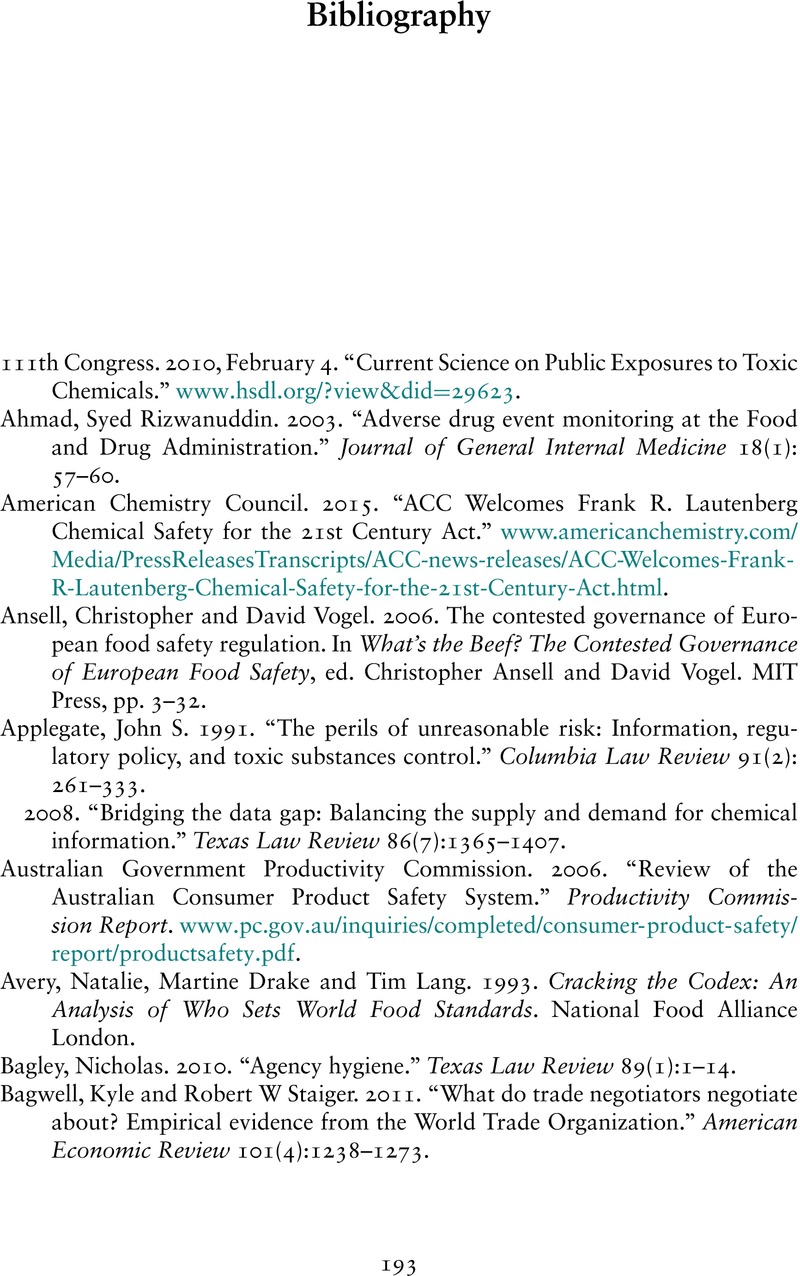Book contents
- Frontmatter
- Contents
- Figures
- Tables
- Acknowledgments
- 1 The Informational Origins of Regulatory Barriers
- 2 Private Information in the Regulation of Risk
- 3 A Theory of Regulatory Barriers
- 4 Seeking Stricter Standards
- 5 How Precaution Begets Bias
- 6 The Internationalization of Bias
- 7 Challenging Barriers
- Statistical Appendix
- Bibliography
- Index
- References
Bibliography
Published online by Cambridge University Press: 23 March 2023
- Frontmatter
- Contents
- Figures
- Tables
- Acknowledgments
- 1 The Informational Origins of Regulatory Barriers
- 2 Private Information in the Regulation of Risk
- 3 A Theory of Regulatory Barriers
- 4 Seeking Stricter Standards
- 5 How Precaution Begets Bias
- 6 The Internationalization of Bias
- 7 Challenging Barriers
- Statistical Appendix
- Bibliography
- Index
- References
Summary

- Type
- Chapter
- Information
- Regulating RiskHow Private Information Shapes Global Safety Standards, pp. 193 - 206Publisher: Cambridge University PressPrint publication year: 2023



